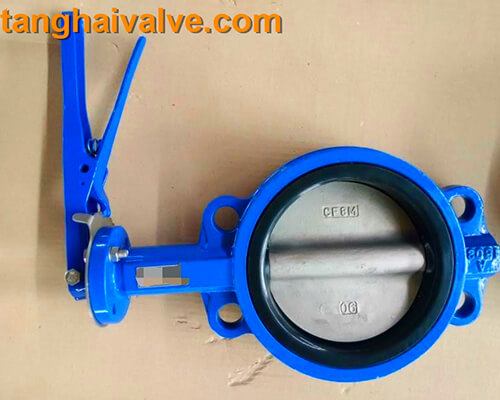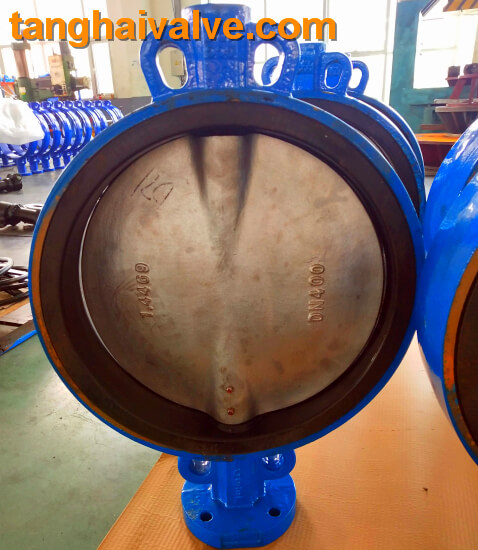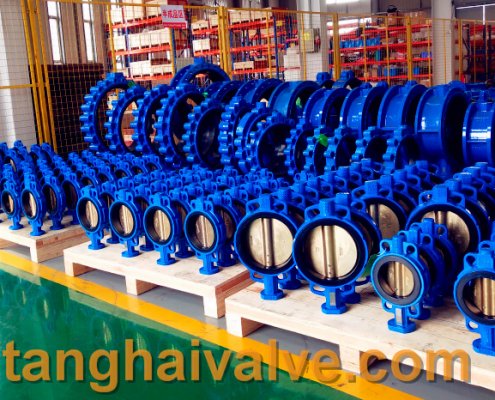Resilient seated /soft-seal butterfly valve prices
The purchase price of soft-sealed butterfly valves is a problem that many customers are concerned about when inquiring, but because the valve is not like furniture and other items in the structure and material is relatively

wafer-type-butterfly-valve-with-handle-13
simple, there are more components of the valve, and according to the material used in different working conditions, The components are different, which makes it difficult to give a fixed quotation for the soft-sealed butterfly valve, which should be based on the actual situation. How much it costs to purchase a soft sealing butterfly valve has a lot to do with the material of the valve plate, the material of the valve body, the material of the sealing ring, manual or automatic, etc. Let’s take a look at the specific factors that affect the purchase price of soft-sealed butterfly valves?
1. Material of valve plate. The material of the valve plate of the soft sealing butterfly valve is nylon plate, galvanized plate, 304 plate, 316 plate, etc. The selection of the valve plate is determined according to the medium to be taken by the customer’s pipeline. The general medium mainly relates to whether it is corrosive. If it is not corrosive, you can choose galvanized sheet, and if it is corrosive, you can choose stainless steel 304 plate or 316 plate. Cold-rolled stainless steel costs more than 10,000 yuan per ton, while galvanized steel is several thousand yuan per ton, so obviously the price will be different for different materials.
2. Material of sealing ring. The sealing ring of soft sealing butterfly valve is generally rubber or fluoroplastic. The rubber sealing ring includes nitrile rubber, EPDM rubber, and tetrafluoro rubber. Several rubbers have their own advantages. Nitrile rubber is oil-resistant, and EPDM rubber is resistant to aging. PTFE rubber is resistant to weak corrosion. The temperature resistance of nitrile rubber and EPDM rubber is about 80 degrees, and the temperature resistance of tetrafluoro rubber is about 150 degrees. So we still have to choose according to the temperature and characteristics of the medium. If the temperature is around 80 degrees, you can choose nitrile rubber or EPDM rubber. If the temperature exceeds 80 degrees, you can choose tetrafluoro rubber. Fluoroplastics can also be used when the medium is corrosive but not high temperature. The price of fluoroplastics will be much more economical than rubber.
3. Manual or automatic. The soft sealing butterfly valve is divided into manual and automatic. Manual is the handle butterfly valve, turbine butterfly valve, the driving method is mainly manual. However, electric butterfly valves and pneumatic butterfly valves do not need to be operated manually but are opened and closed automatically by the device. Of course, the price is relatively higher than that of manual ones.
In addition to the above, the size of the valve’s caliber, the size of the applicable pressure, whether it is a flange connection or a wafer connection or an electric welding connection, these factors will all affect the purchase price of the soft sealing butterfly valve. So if you want to know the purchase price of the soft sealing butterfly valve you need, the easiest and best way is to quickly contact our Tanghai staff to give you a professional quotation. According to the working conditions, pressure and medium conditions you provide, Tanghai Professional Services will recommend the most suitable valve types for you and quickly give you an accurate quotation. You are welcome to inquire!
TH Valve is a professional manufacturer of butterfly valve, gate valve, check valve, globe valve, knife gate valve, ball valve with API, JIS, DIN standard, used in Oil, Gas, Marine industry, Water supply and drainage, fire fighting, shipbuilding, water treatment and other systems, with Nominal Diameter of DN50 to DN1200, NBR/EPDM/VITON, Certificates & Approvals: DNV-GL, Lloyds, DNV, BV, API, ABS, CCS. Standards: EN 593, API609, API6D
Related news/knowledge:
Installation requirements for manual butterfly valves
Commonly Used Seat Materials for Butterfly Valve
Types and working principles of electric valves
Valve stem shaft (TH-VST)





 © Copyright 2020 Tianjin Tanghaidongyang Valve Co., Ltd. All Rights Reserved.
© Copyright 2020 Tianjin Tanghaidongyang Valve Co., Ltd. All Rights Reserved.